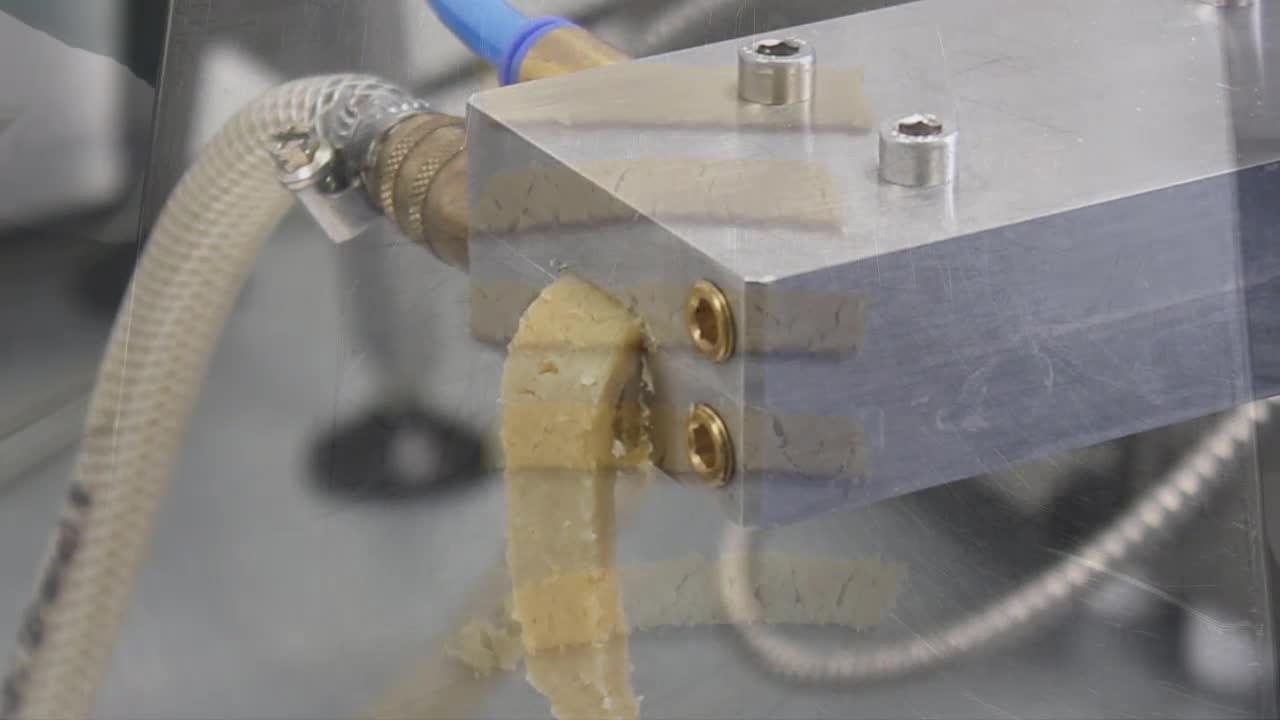
Modern technology in food production
Optimize food product development and earn consumer trust
Thermo Scientific instruments for food development are designed to minimize human errors, provide clear traceability, enable consistency among batches, and confirm that products meet food and beverage regulations. You can rely on our expertise to ensure that the safety and sensory expectations of your consumers are continually met.
Food product development strategy
Management of mechanical and sensory attributes of food products and analogs is an essential part of food production. Extrusion of food ingredients into the preferred food shape and size offers a continuous, cost-effective production technique, while rheology allows the assessment of mechanical properties to ensure that food characteristics match your brand’s promise. Combining these technologies helps ensure precise process control and consistent product quality.
Food extrusion using twin-screw extruders
Extrusion processes are common in the development and production of food products and serve a crucial support role in the production of new functional foods. Through carefully chosen processing parameters, they determine and enhance the food properties of texture and shape and can influence flavor or color.
Food extrusion is an established, versatile method to produce:
- Meat analogs
- Pastas, cereals, snacks
- Flavorings
- Nutritional additives
- Animal feed products
Rheological properties of food
Rheological and textural properties play important roles during the entire life cycle of liquid up to solid food formulations. Rheometers can measure rheological properties such as viscosity, elasticity, and yield stress. With the broad range of structures, textures, and behaviors of food materials, a wide range of rheological methods for characterization across the stages of formulation, manufacturing, shelf life, and consumption is needed. Rheometers have an array of accessories that support scientists and technicians with their investigations.
UV-Vis spectroscopy in food analysis
UV-Visible spectrophotometers offer quick, inexpensive, easy-to-use analysis to verify whether product quality is within specification for beverages like beer, wine, juices, energy and soft drinks, waters, and other liquids, even sticky and thick ones, like honey, or oily ones, like palm oil.
For example, a simple UV-Vis analysis of your latest craft beer can identify whether its bitterness matches the expectations for your most popular IPA. You can test the clarity of your water as a raw material, or test a bottled product for the presence of impurities or inclusions. Or if you’re making wines, you can assess whether the color intensity is just right for your rich burgundy. And if your refreshment drink has a brand-identifying brilliant blue color, you can check that the concentration of the food-safe dye is within specification. Even your sticky-sweet honey can be tested to assess any color shifts due to poor storage, adulteration, or extreme heat exposure and to verify whether it meets the regulatory standards of allowable HMF levels.
IR spectroscopy in food analysis
Ensuring quality and safety in foods and beverages requires continuous vigilance to ensure that all surfaces the food contacts throughout production are inert, non-toxic, and scrupulously clean. Even so, the food may pick up small amounts of material along the way. It is essential to identify unexpected components to determine if they are contaminants requiring elimination or acceptable byproducts of the food production process. Infrared spectroscopy can provide rapid analysis throughout the process.
X-ray fluorescence analysis of food
Human baby formulas, pet foods, and domestic animal feed contain a broad range of required nutrients and serve as the primary daily energy source in a powder, kibble, or wet format. Infant formula is a mixture of nutrients and other components designed to roughly mimic human mother’s milk at approximately one to three months postpartum. Nutritional formula is usually prepared for bottle-feeding or cup-feeding from powder (mixed with water) or liquid (with or without additional water). There can be significant differences in the nutrient content between commercial products. Wavelength dispersive X-ray fluorescence (WDXRF) analysis performs qualitative measurements by comparing sample values to a set of calibration standards.
Handheld XRF Analysis
XRF analysis is a non-destructive analytical technique used to determine the elemental composition of materials. When deployed in a handheld analyzer, food producers can use it directly on the food processing line to analyze foreign body contamination such as pieces of metal, ceramic, glass, and - in some cases - rubber and plastic debris. Data from the analyzer can then point to potential sources of the contamination, and that same data can be stored for future reference.
For Research Use Only. Not for use in diagnostic procedures.
